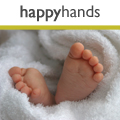Toddler Clinic
Childproofing your home
Once your baby is on the move, different things around your home will have to change. In the first year, crawling babies should be kept away from anything they can fall off, bump into or reach and put in their mouths. As your toddler becomes ever more active and adventurous, you need to be safety-aware at home and when visiting other places.
Most parents develop an instinct for assessing what’s safe and what’s not and don’t worry, the changes will be gradual along with your child’s physical changes, but here is a useful checklist.
Your toddler’s toys and bedroom
• Make sure all toys carry the EC safety logo and that they do not contain small parts that could be pulled off and be swallowed. Most toys like this will carry a ‘not suitable for children under 36 months’ notice, but even after this three years it is a good idea to gauge how much your particular child understands about the dangers of putting toys in her mouth.
• Do not keep your child’s toys in a toy box with a lid that might slam down – either remove such a lid completely or buy a box with a lever mechanism that allows a lid to come down slowly without catching a child’s fingers.
• Do not tie anything to your child’s cot that could dangle and cause choking or get caught around her neck. Make sure you buy a cot that meets the right safety standards – BS EN 8509. This will ensure that bars are not too far apart, that the materials used to make the cot are safe and that catches and joints are not a risk. As your baby gets older, make sure you lower the depth of the cot so she cannot fall out.
• Do not use lights or other electrical equipment with cords that trail in your child’s bedroom and make sure any lights that may heat up are well out of your child’s reach. Do not leave any heating equipment switched on when you are not in the room.
• Do not leave your baby in a cot with an open side or on a changing table where there is a danger she could roll or crawl off.
• Make sure your child’s window cannot be opened more than 10cm without you unlocking it first. Opt for curtains that do not have pull cords hanging down on them.
Steps, stairs and safety barriers
• It is better to prevent your baby crawling up stairs rather than putting a gate at the top of the stairs, so fit one at the foot of any stairs or steps you do not wish your toddler to negotiate on her own.
• Make sure any gate or barrier you fit is secure (poorly fitted gates can fall when your child puts pressure on them and be a serious danger in themselves). Gates and barriers should meet the safety standard BS EN 1930.
• Don’t leave items like books or clothes on stairs or let any carpet come loose – these could cause you or your child to trip at any time.
• If your toddler’s bedroom is near stairs, put a gate on her bedroom so that if she wanders in the night (once sleeping in a bed) she cannot accidentally fall on her way to your bedroom.
• Think about other rooms or areas like fireplaces where you might need to fit a barrier, too.
Doors and windows
• Make sure your front door is not easy to open by a toddler or child. If needed, keep the top bolt locked when you are in.
• Do not fit sliding doors to a bedroom – in a fire the metal runner could heat up and expand, making it impossible to open the door.
• Make sure that little fingers don’t get trapped in door openings or hinges. During waking hours either wedge doors open or fit ‘slam stoppers’ which you will find at any nursery product store.
• As with bedroom windows, make sure any opening is limited with a window lock. If you are in your room with a window open much wider, close this before leaving the room in case your toddler or even an older child wanders in.
• Choose curtains or window blinds where there is no cord hanging down. These are a real risk for small children.
• Any low-level panes of glass which are at risk from being bumped into a smashed should either be covered with protective plastic (designed for this purpose and available at nursery stores) or replaced with a different material or toughened or laminated glass.
Bathrooms
• Never leave your child unattended in the bath (or even with a filled sink) for a moment.
• Make sure you fill the bath with warm or cold water first so that a very hot bath does not become a risk – young children and older people are particularly at risk from nasty burns caused by scalding from hot water, because their skin is thinner. Ideally, fit a tap thermostat which will allow you to have water that is hot enough for all the family (these are due to become law in new builds during 2010).
• Do not leave a bath running and then go to do another task without knowing where your child is.
• Use non-slip mats in the bath and on the floor.
• Keep toddlers away from hot radiators, towel rails or taps.
•Make sure your child is not at risk from a toilet seat slamming onto hands.
• All bathroom cleaning products and medicines should be locked away out of reach. Ideally make sure your toddler does not know where you keep these ‘forbidden’ items.
Kitchen
• Make sure when you are cooking that your child does not get too close to any hot equipment and that you are not in danger from tripping over your child whilst carrying anything hot. Keep the handles of pans angled towards the back of your cooker so they cannot be easily grabbed at during cooking. Also make sure that any hot items are placed somewhere away from your child’s reach.
• Put locks on cupboards or drawers that may have breakable items in, that contain any dangerous substances like bleach, or that may snap shut and hurt fingers. These locks are available at any nursery store.
• Fit smoke detectors outside your kitchen (and fit one on each level of your home no matter how many levels there are). Make sure you check these regularly to ensure the batteries have not run low.
• Don’t put any items onto a tablecloth whether there is a danger that a child could pull on it and bring anything down onto her head.
• Be careful when loading your dishwasher that you do not place sharp objects like cutlery facing upwards as this can be a hazard your child could fall onto when the door is open.
• Be careful when drinking a hot mug of something or when carrying hot plates and food, that could spill onto your child.
• If you are cooking and the phone rings or you need to leave the room for another reason, it is safer to switch off any hobs or the oven and switch them back on again when you return.
General safety round the house
• Make sure that wall sockets which are not in use are covered with socket covers. These are cheap and available in any nursery or electrical store.
• Keep out of reach any dangerous objects such as lighters, matches, hot or alcoholic drinks, bowls of nuts, grapes or other snacks that might choke a child.
• If you place fragile or dangerous items out of a child’s reach, try to keep them out of sight, too, so that a toddler doesn’t try to climb up to get them.
• Use wall attachments to secure any bookcases or chests of drawers that might fall if climbed on – falling furniture has killed children in the past.
• If you are doing any building or repair work make sure you only do this when your toddler is not around and that all equipment has been safely packed away before you go off to do something else.
• Try to avoid tables and other furniture with sharp corners or position them so that they are not easily in your toddler’s pathways.
• Keep wires out of the way so they cannot be tripped on or pulled at.
For useful advice and insights on child safety at home, general home safety and information on fire and heat, visit the RoSPA website.
Related Articles
Games to play with toddlers and preschoolers
BornFree – the natural approach to bottles
Sumtastic - what's it all about?
Mima pushchair: a new exclusive for John Lewis
Interactive Reading App for Toddlers
Safety advice for bonfire night
Related Products
Brights and Stripes, baby and toddler clothes
Nibbling, Victoria Teething Necklace
Tommee Tippee, Closer to Nature Digital Ear Thermometer
Related Forum Topics
Forums: Toddlers
Re: Cranial massage
Clare, Mother of 2, London
Questionnaire on experiences of exercise and birth: can you help?
map
Have Your Say
Be the first person to comment on this article, just post a comment below.






In order to post a comment you need to be a member. Join Now | Sign in